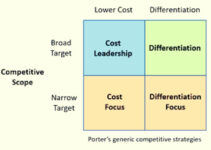Introduction
Evaluating the performance of employees plays a significant role in the growth and development of the company. If a company doesn’t have a proper system of measuring the performance of the company or employees, then it wouldn’t know whether it’s making any progress or not. Today, we’ll discuss what is performance appraisal; its objectives, types, methods, advantages, and disadvantages.
What is Performance Appraisal?
Performance appraisal is the process of reviewing the performance of employees regularly on the job and their contribution to the company. It goes by many names like employee appraisal, evaluation, performance review, or annual review. Anyways, performance appraisal measures the growth or lack of achievements, skills, and progress of employees.
Businesses and companies conduct performance evaluations to provide feedback to the employees and justify their decisions relevant to the termination of contracts, bonuses, and increment of pays. They can conduct it at any time like annually, semi-annually, quarterly, or monthly depends on the company’s appraisal policy. In short, it comprises of following elements;
- Finding better ways to improve the growth and development of employees
- Management and supervisors analyze the factors that impact the performance of employees
- They compare the employees’ salary with their assigned targets and how they’re performing in their daily work routine
Objectives of Performance Appraisal
The main goal and objective of PA are to compare the employees’ work with the company’s standards. Some of the other objectives of the performance appraisal are as follows;
- It impacts the behavior and attitude of employees at the workplace and makes them focus on their work
- Assisting HR personal to check whether employees need training or not
- Offering feedback to the employees and letting them about their contribution and performance to the company
- Offers an opportunity to the potential candidates in terms of career growth and development
- It’s significant to know the strengths and weaknesses of employees so that you could assign them the right job
- The performance review system develops the record and the company uses the record to justify the wage record and compensation of employees.
Types of Performance Appraisal
Different companies use different types of performance appraisals, some of the main types are as follows;
- Negotiated Appraisals: it’s the latest form of appraisal, and it uses the mediators to evaluate the performance of employees and offers them an opportunity to present them before. Its focus is recognizing the employees’ work before offering any feedback or criticism. It can be a very useful system when there’s a conflict between management and employees.
- 360 Degree Feedback Assessment: it’s a type of appraisal system that collects ratings and information from various sources like peers, supervisors, managers, and employees, and then reviews the performance
- Peer Assessment: it’s a type of appraisal where your colleagues and coworkers rate and check the performance
- Self-Assessment: as the name implies it allows employees to evaluate their performance and behavior at work by themselves
Methods of Performance Appraisal
Modern Methods
Some of the main modern methods of performance appraisal are as follows;
- 720-Degree Feedback: here you collect feedback and rating both from internal and external stakeholders of the company about employees’ performance like; financial groups, investors, suppliers, customers, colleagues, peers, supervisors, and management, and then present the reviews
- 360-Degree Feedback: you analyze the performance of employees by collecting information and rating from their self-assessment, group members, peers, and supervisors. You should keep in mind all the ratings and reviews while conducting the evaluation
- Assessment Centers: it’s the place that performs various exercising to review employees’ growth and productivity. These exercises comprise computer simulation techniques, role-playing, discussion, and others. The evaluation criteria of employees are their administrative skills, confidence, emotional intelligence, mental alertness, and communication skill. However, the observer reviews various factors at the end
- Psychological Appraisals: you bring psychologists to check the growth and productivity of employees. Here, you keep in mind the future performance of employees. They employ methods like discussion, reviews, interviews, in-depth analysis, and psychological tests to check their performance.
- Management by Objectives: as the name implies, management sets targets for employees; and reviews whether they’ve achieved those targets, or not. Meeting those objectives are the main criteria of appraisal.
Conventional Methods
Some of the main traditional performance appraisal methods are as follows;
- Comparative Evaluation Approach: it is a very popular form of review method and comprises of contrasting employees’ growth with their colleagues and coworkers. Paired and ranking comparison methods are two main types.
- Cost Accounting Method: here you link the employees’ performance with the financial benefits of the company. The reviewer studies the cost of the company in order to evaluate employees’ work
- Essay Method: the reviewer writes a complete job description of employees in terms of performance, strengths, weaknesses, training and development program, relations with colleagues, etc.
- Confidential Reports: usually governmental organizations follow this method, and submit the review report of employees to the concerned department or organization. Its evaluation parameters are attendance, technical ability, integrity, teamwork, leadership, etc.
- Observation & Performance Test: the reviewer asks the employees to perform certain tasks or takes an oral questioner test to analyze the knowledge, skill, and ability of employees
- Field Review Method: the reviewer from outside the company’s department evaluates the employees’ records and progress. It could be the person from the corporate head office or the HR department
- Behaviorally Anchored Scale: reviewer prepare various written statements to study the behavior of employees; and then judge its behavior on its scale and assign points.
- Critical Incidents Method: supervisors and management observe the behavior of employees and evaluate their performance
- Forced Distribution Method: the reviewer sets the criteria of bell-shaped curve, and the employees have to be on that scale
- Forced Choice Method: the reviewer studies various written statement of employee’s work performance, and pass the judgment in the form of true or false
- Checklist: the reviewer follows the standard questioner checklist, observe their behavior, and mark it yes or no answer
- Rating Scale: you quantify various factors like dependability, initiative, attitude, etc. The scale varies from poor to excellent based on their performance
Advantages of Performance Appraisal
Performance appraisal is one of the main areas of HR operations. Some of the main advantages of PA are as follows;
- When you tell employees of their progress; then it would motivate them to improve their growth by focusing on the weak areas
- It’s the best way to offer feedback to the employees on their work, and how they can do their job better
- It helps the recruiters to review their selection criteria that what type of people they should look for
- Highlights the weak areas of the employees that the company should conduct training and development to improve weak point
- Guides the company to rethink its salary and compensation plan based on the progress of employees, those who are showing, they need special benefits and bonuses
- The management would know the better-performing employees and inefficient workers
Disadvantages of Performance Appraisal
Some of the main disadvantages of performance appraisal are as follows;
- Sometimes, the reviewers don’t have the sufficient skill and expertise of appraising, and it results in the form of poor judgment
- It’s difficult to measure vague factors like abilities, attitude, and confidence
- Reviewers ignore the key performing areas that play a significant role in the appraisal
- The whole review system depends on the measurement of a few factors; if you focus on irrelevant factors, then it would jeopardize the results
Conclusion: What is Performance Appraisal? Types, Methods, Advantages & Disadvantages
After an in-depth study of what is performance appraisal, its objectives, types, methods, advantages, and disadvantages; we’ve realized that PA is very important for the growth of the company. If you’re developing the appraisal method for your company, then you should keep in mind different methods and choose whatever suits your organization.

Ahsan Ali Shaw is an accomplished Business Writer, Analyst, and Public Speaker. Other than that, he’s a fun loving person.


